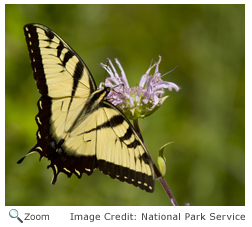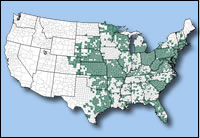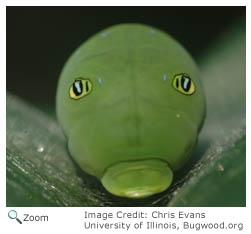Eastern Tiger Swallowtail - Papilio glaucus |
|||||||||
Description Range |
HabitatThe eastern tiger swallowtail lives in deciduous woods along streams, rivers, and swamps. Diet Lifecycle When the eastern tiger swallowtail caterpillar matures it is green with orange and black false eyespots. The eye spots are a type of deceptive coloration that helps protect the caterpillar from predators. Predators see the eye spots and think that the caterpillar is a much large animal than it really is! |
||||||||



 The eastern tiger swallowtail is found in North America east of the Rocky Mountains from Ontario south to the Gulf coast and northern Mexico. It flies from the spring through the fall. The eastern tiger swallowtail butterfly is found in New Hampshire.
The eastern tiger swallowtail is found in North America east of the Rocky Mountains from Ontario south to the Gulf coast and northern Mexico. It flies from the spring through the fall. The eastern tiger swallowtail butterfly is found in New Hampshire. 
